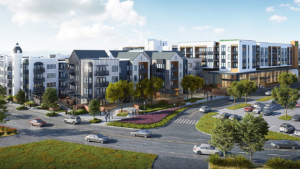Taking the step to buy a home is an exciting one, and it shouldn’t be rushed. But you’ve already done the hard part and gotten pre-approved for a mortgage. This part lets you filter your search to include only the homes in your budget.
From there, the search can begin! However, it helps to know what your dream home looks like so you can filter out the automatic “nos.”
The best time to do this is before you start house hunting. Otherwise, you’re going to add a lot of “wants” to your “needs” list and make the search extra complicated. This list can go to your buyers agent in Melbourne or wherever you’re looking to streamline their picks for you.
Start by creating your dream home essentials by using these 5 tips. Then, as you see things you fall in love with in different houses, you can add them to your “wish list” later!
1. Get Real About the Budget
Pre-approved for a designated amount doesn’t mean you can afford the monthly mortgage payment. When you get down to the nitty-gritty analysis, do you really want to have to pay that much every 30 days? And can you afford the extra costs on top of that amount, like HOA fees, property taxes, and mortgage insurance?
Find out from the lender how much closing costs and down payments will be. Typically, the required down payment is anywhere from 3-10% of the cost of the home. This can be a make or break for some buyers, even if you were approved for a higher loan amount.
2. Plan for Other Expenses
As much as you love your dream home, you’re not going to be there 24/7, and if you are, you’ll still need to eat and provide for the essentials of daily living. Leave yourself some cushion to enjoy life outside of the house, too.
If the home you’re interested in is going to need repairs, add those expenses into your budget. You’ll want to decorate, too, and possibly get new furniture. If you plan on increasing the size of your family or adding on new rooms, consider those expenses.
3. Review Your Options
What’s your dream home, off the cuff? Is it a massive two-story with acres of property? A townhouse with a pool and fitness center?
The preference of home-style will affect the price of the houses you look into. Make sure you have a “must-have” list that includes a minimum number of bedrooms and bathrooms, the age of the house, stories, and style. If you want to keep up with a yard, write that down, as well. Otherwise, if it will be a hassle, lawn maintenance is one more expense to consider.
4. Determine the General Area
How far away from your important destinations do you want to live? Where are the vital places that you go to regularly?
If you move too far from these areas, you’ll be increasing your fuel budget. Plan the location carefully. Would you rather have an urban, rural, or suburban setting? Do the city and neighborhood matter? How close to public transportation do you want to be, and is it important that you avoid traffic?
Narrow down your location based on where you are now and where you plan to be in the next few years. Your children’s schools can change, your job may be different, and your other essential destinations can vary. Your home’s location should be versatile enough to take these changes in stride.
5. Keep Track of the Features
As you visit each home, have a clipboard or software document that helps you track what you loved and didn’t like about each one. Evaluate the neighborhood, check into the activities nearby or amenities in the area, and make sure the home has your must-haves covered.
Don’t compromise on your original list. Remember, everything else can be added or renovated later.
Keep a record of the features in each home, and use this information to pick your dream house.




